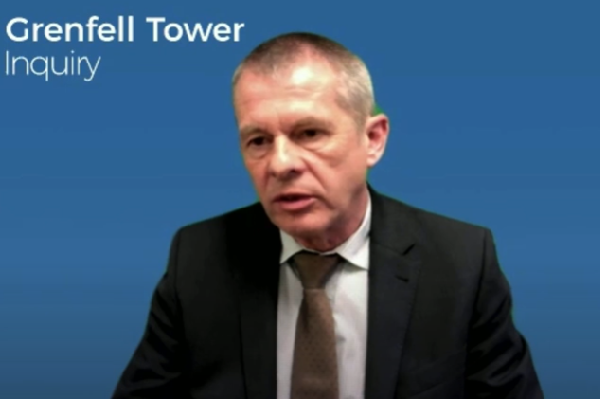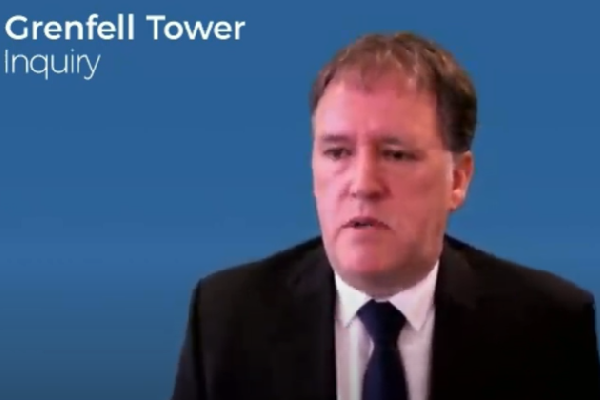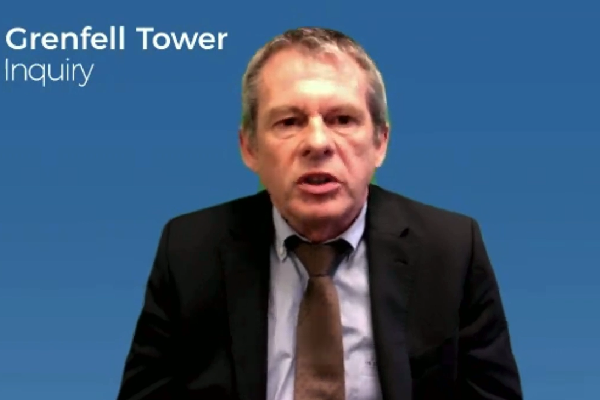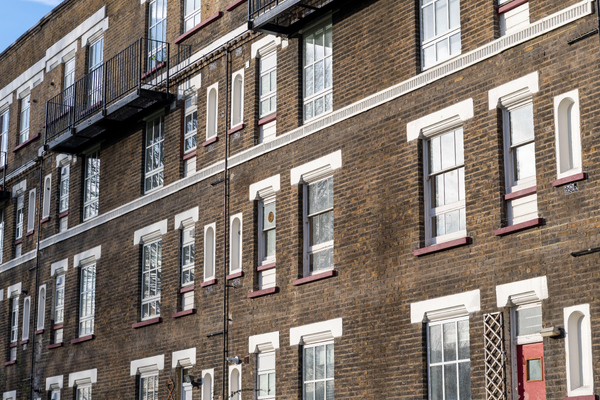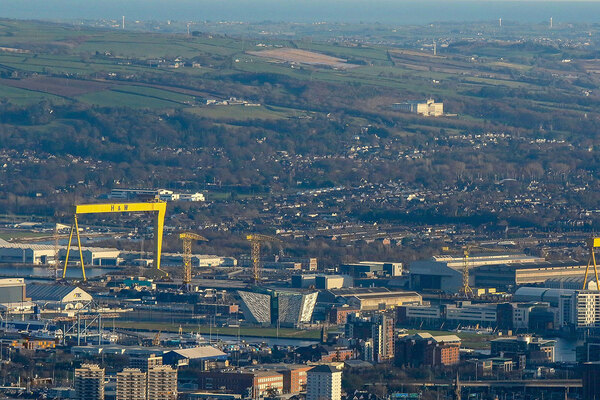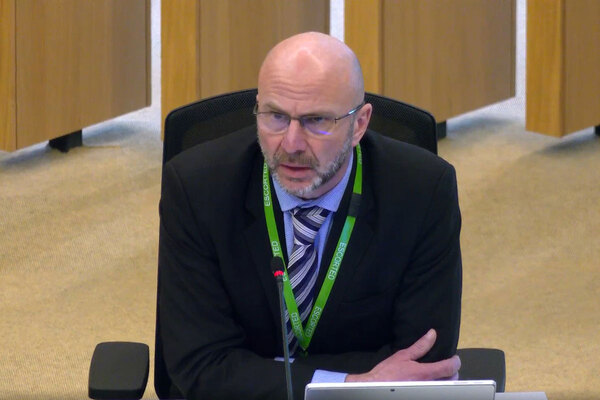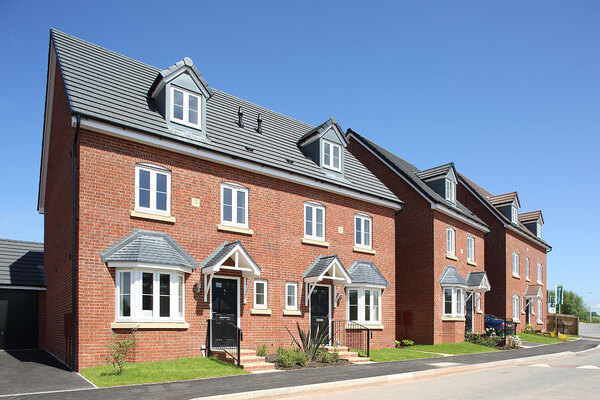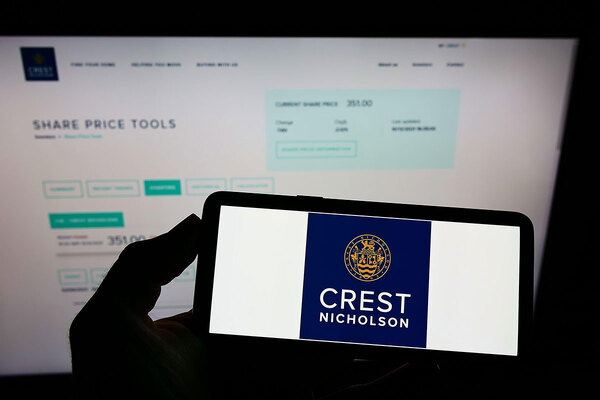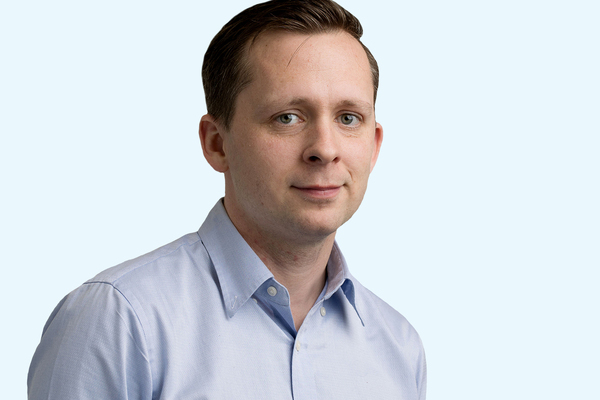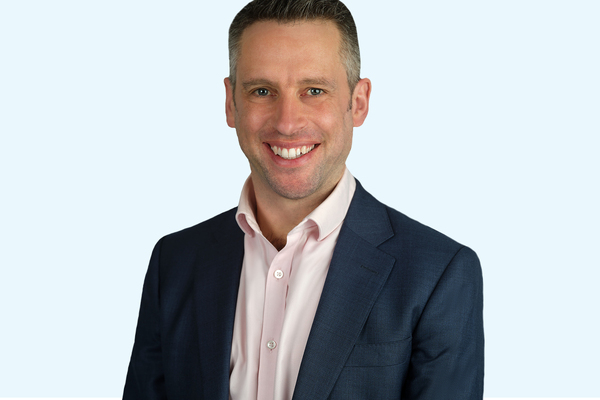You are viewing 1 of your 1 free articles
Senior BRE technician denies knowledge of secret fire-resisting boards in Grenfell insulation test
A senior technician at the Building Research Establishment (BRE) has denied any knowledge of the presence of undeclared fire-resisting boards during a critical fire safety test on the insulation used on Grenfell Tower, despite accepting an “incredible list of omissions” when he may have had an opportunity to discover them.
Philip Clark, former burn hall manager at the BRE, was today grilled about a large-scale fire test commissioned at his facility by insulation manufacturer Celotex in May 2014.
The test passed and would later become a crucial part of Celotex’s claim that its RS5000 product – eventually used on Grenfell Tower – was suitable for high-rise buildings.
But the inquiry has already revealed that Celotex included 6mm magnesium oxide boards in key locations on the test rig to help it resist the fire and that these were not declared in an official test report or the firm’s marketing.
Two previous Celotex witnesses have said that Mr Clark knew this was done, including one who said he had “no doubt at all” that the senior BRE staff member was aware.
But today Mr Clark insisted he had no knowledge the boards were included and would have stopped the test if he had known.
The inquiry saw delivery notes for the materials used in the test rig to the BRE, with no documentation for the boards included.
Mr Clark said that this happened occasionally as “people being people” did not want to upset delivery drivers by insisting on documentation and simply delivered items straight to the hall where the test rig was assembled.
He accepted that as the rig was assembled by contractors working for the client, “if someone was going out of their way to deceive” there was a possibility they could alter the rig in a way the BRE was not aware of.
Mr Clark was shown a checklist of steps to go through for a cladding test, which included receiving specifications from the client and checking samples of the materials used in the test. But this was never completed for the May 2014 test.
“What was the point of having a detailed standard operating procedure such as this… which you didn’t use?” asked inquiry counsel Richard Millett QC.
Mr Clark answered that the sheets were “more of an aide memoir” as to what steps to go through.
The BRE also did not receive drawings of the planned test rig and Mr Clark said this was not unusual and happened because the test in May 2014 was similar to a previous one which Celotex had failed, only with a thicker cladding board used.
“Wasn’t it essential for the BRE to know the composition of the system being tested?” asked inquiry chair Sir Martin Moore-Bick.
“I understand your question and the answer is from checking the delivery notes and checking and measuring on site. It wasn’t common practice to insist on having them [drawings] before the test, maybe it should have been, but it wasn’t,” Mr Clark said.
He said that he was away on a first aid course when the test was constructed and could not explain why his deputy did not notice the additional fire boards being installed, other than to say the rig was only checked at certain specific times by the BRE.
The boards were covered over with panels of a different thickness which were different in colour to the rest of the rig and were visible behind them in photographs of the build up taken by the BRE.
Mr Clark said that these photographs were taken from height and that the boards – potentially 8m above the ground – would not have been visible from where he was standing at ground level.
“This is quite an incredible list of omissions and missed instances isn’t it?” asked Mr Millett.
“Yes, I probably agree with you,” said Mr Clark.
“Mr Clark, isn’t the reality that you knew very well that there was a 6mm magnesium oxide layer behind it? You were in charge of this test, the photographs showed it was there, the deputy knew it was there as it must have taken time to put up and it was covered over by a perfectly obvious ruby-coloured band in two different places by a material of different thicknesses,” said Mr Millett. “Surely you should have known what was behind it?”
“No, I would have reported it and had I known about it I would have stopped the test,” said Mr Clark.
Jamie Hayes, a witness for Celotex, previously told the inquiry he had “no doubt at all” that Mr Clark knew about the boards.
Earlier the inquiry was shown video footage of Mr Clark telling Celotex employees that their first test, carried out in February 2014, had likely failed due to the cladding distorting and pulling away, rendering the cavity barriers ineffective. He was recorded saying he had “seen worse failures”.
But he denied under questioning that this constituted offering advice to Celotex and accused a Celotex witness, Jonathan Roper, who testified that he had advised thickening the panels to give a better chance of passing on a second attempt of lying.
At the start of his evidence, Mr Clark was asked whether the BRE influenced the government into adopting the testing methodology as a route to getting cladding system to comply with guidance for commercial reasons.
The BRE proposed the new testing methodology in 1999, two years after it was privatised in 1997, and was the only organisation with the facility to carry the tests out when it was first introduced into guidance.
Mr Clark agreed that the BRE had influenced the process of this system being adopted, but said this was because it was “the right thing to do” as opposed to a commercial motivation.
He accepted that Brian Martin – now a top civil servant at the Ministry of Housing, Communities and Local Government – had been seconded from his role at the BRE to work part time within the government on the new testing methodology.
“Would it be fair from your knowledge to describe BS 8414... as a joint project between government and BRE with Brian Martin on both sides?” Mr Millett asked. Mr Clark replied that this was a “a fair assumption”.
The inquiry also heard that Mr Clark left his job at the BRE in December 2017 after the Grenfell Tower fire, having been made a lucrative offer by competitor Exova Warrington Fire.
A year later he was employed by insulation manufacturer Kingspan, to take over a new in-house fire-testing programme it had begun to develop.
But he was made redundant with “10 minutes’” notice last June, shortly before details of Kingspan’s testing at the BRE was made public by the inquiry. Mr Clark said he believed his departure was linked.
“It’s not long after that happened that the information came out about what Kingspan were doing with regard to the falsification of tests, but I have got no substantive evidence, it’s just a feeling I had at the time,” he said.
The inquiry has previously heard that Kingspan hid devastating test failures from the market and did not declare a change to its product following a successful test in 2005 which appears to have reduced its fire performance.
The Grenfell Tower Inquiry continues with further evidence from Mr Clark tomorrow.
Sign up for our weekly Grenfell Inquiry newsletter
Each week we send out a newsletter rounding up the key news from the Grenfell Inquiry, along with the headlines from the week
Already have an account? Click here to manage your newsletters

